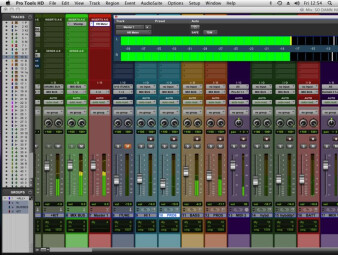In the coming weeks we'll discuss in detail the so-called "glue" effect, in other words how to make the mix more homogeneous using different procedures. Today we'll discuss a simple method to emphasize the cohesion we've achieved so far.
So far so good!
What have we actually done so far? We have striven to shape the different instruments so that they blend naturally with each other like the pieces of a sonic puzzle. In order to do that, we’ve worked on the relative volumes, the stereo image, the frequency balance and the dynamics of the mix. At the same time, we’ve created a “3D virtual space” to place the audio objects. And believe it or not, by doing so we’ve managed to provide more coherence to the song being mixed. You only need to compare the post-gain-staging bounce with the latest one you did to realize that the so sought-after and famous glue effect is already taking shape! The good news is that you are still in time to reinforce this effect using some techniques that ought to be familiar to you now.
Take the bus
What are you looking for? A harmonic whole, right? In that case, why not focus on the entire mix rather than processing every track on its own? A way to do just that is to process groups of tracks. Just imagine…If you group all your drum tracks in one single bus, your rhythm guitars in another one, the vocals in another one, etc., when you process these buses with EQ or compression, it’s only logical that every group becomes more cohesive. In fact, the tracks of every group will share the same tonal color and dynamics. Going a step further, processing the bus master you’ll add even more homogeneity to the overall mix. What else could you ask for?
But be careful! The goal hear is not to apply drastic tonal or dynamic changes because you risk throwing everything you’ve done so far down the toilet. An increase of one dB on a precisely targeted frequency or a gain reduction of 0.5dB on the loudest parts ought to be more than enough. Think of it is as if you were delicately massaging a pastry dough rather than kneading it.
To practice your massaging skills, I recommend you to use plug-ins that are supposed to emulate hardware gear. Why, you ask? Well, that’s what we’ll see in detail in the following weeks when we explore the benefits of distortion…

